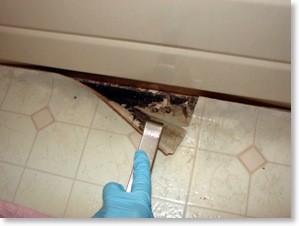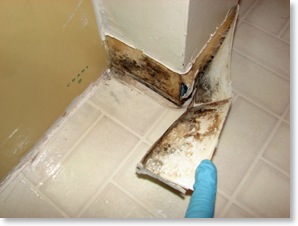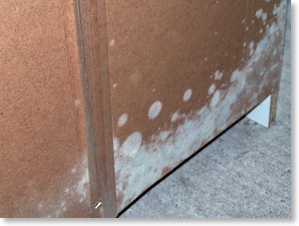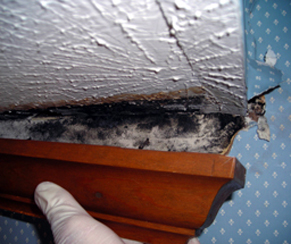Mould Inspections in the Greater Vancouver and Lower Mainland Areas
Frequently Asked Questions about Mould Inspections
1. What can I expect to see during a mould inspection (assessment)?
2. What is the mould inspector looking for?
3. What type of equipment can I expect the mould inspector to bring for a thorough mould inspection?
4. How long does a mould inspection take ?
5. What happens after the mould inspection, does the inspector clean the mould ?
6. Why do I need a scope of work?
7. How can your company give a cost estimate for mould remediation and other mould inspection companies don't?
8. What is the purpose of mould inspection report ?
9. What if I am in the process of purchasing a property that has mould?
10. If I have already had a mould inspection company take an air -sample with a lab report, do I still need a scope of work ?
11. How much will the mould remediation cost ?
12. Once we have found the source of the mould, can we clean the mould ourselves?
13. I am currently renting an apartment, would I need a full mould inspection and scope of work?
14. How do we make an appointment for a mould inspection ?
1. Mould Inspections - what can I expect to see during a mould inspection ?
Initially, a walk through evaluation of the property is done to identify potential sources of mould / fungal amplification. This includes an indoor and outdoor inspection of the house, investigation of the crawlspace, attic, garage and basement. A thorough inspection of the HVAC system and filters. Areas of concern are photographed and documented.
Then the inspector will take a series samples from areas of concern, this includes bulk swabs and tape lifts and air samples, if required. Outside samples are taken for comparative testing. The bulk tapes samples are examined on-site with a microscope, or expedited to our head office, to determine if the mould has extended beyond areas that are visible and if invasive testing of any area is required.
2. What is the mould inspector looking for?
Mould needs a source of moisture or humidity, a source of food or nutrients, and proper temperature to grow. Because mould grows well at room temperature, control is achieved through adequate control of moisture or humidity in the house. Our inspections find areas which have poor humidity control, excess condensation or water intrusion. We are also identifying areas with visible fungal growth, high mould spore counts, water damage, excess organic matter such as dust or dander, poor ventilation, and inadequate air filtration.
3. What type of equipment can I expect the mould inspector to bring for a thorough mould inspection?
- Digital Microscope - for immediate confirmation of suspected contamination
- Digital camera - full documentation of inspection
- Air sampling equipment - to test for interior and exterior mould spore counts
- Laser Particulate Counter
- Bulk Tape sampling supplies - to confirm, using microscopy, areas of spore amplification, especially in areas where visual confirmation is not practical or accessible
- Bulk Swabs - for petri dish cultivation
- Lighting equipment
- Moisture meter- to identify wet or problematic areas, on the surface and behind walls - we include a full moisture survey in the mould consultation report
- Relative Humidity monitors / thermometers- to assess humidity levels and temperature in various areas of the house, to measure HVAC and ventilation efficiency
- Full personal protective equipment (PPE) - full and half face masks-respirators, gloves, protective clothing, goggles (OSHA standards)
- Equipment for invasive inspections - to remove small sections of drywall ( not required for every mould inspection).
4. How long does a mould inspection take ?
Depending on the size of the house and how visible and accessible the areas of mould contamination are, the inspection could take 3 to 5 hours on an average 2 story home with a crawl space. If mould is suspected to be behind a wall, for example, then some invasive testing would be required, this may take longer.
5. What happens after the mould inspection, does the inspector clean the mould ?
No, the inspector will not clean the mould at the time of the inspection. The inspector will answer all of your questions about the mould contamination that was found, show you the area or areas that are the most likely source of the amplification, areas that have high mould spore counts and other potential mould causing sites.
The mould inspector will identify for you any areas that have had water intrusion or high relative humidity or heavy condensation, as these areas may require repair or maintenance for moisture intrusion as part of the remediation process. The inspector will discuss the methods, products and protocols required to adequately clean and remove the mould from the property.
We will then provide you with a full written report of the inspection, and the scope of work, i.e..step by step - the products, materials and procedures and safety protocols that should be followed by a remediation company to clean and remove the mould. A list of areas that require repair or maintenance will also be included. We will also include a quotation for the cost of remediation of the mould.
6. Why do I need a scope of work?
The scope of work gives the remediation company a full and complete set of instructions for the work that is required to clean the mould. It explains in detail, the procedures, processes and safety protocols that should be used for your individual mould problem. It insures that you get the best results. It also allows you to give that same set of instructions to several remediation companies to get competitive quotes.
7. How can your company give a cost estimate for mould remediation and other mould inspection companies don't?
We offer a full service for our customers. We can take you through from inspection to consultancy to mould remediation. All of our inspection reports are reviewed by a panel of engineers and scientists to ensure that our scope of work and cost estimates are appropriate and accurate. Our company believes that having mould inspectors that have solid remediation experience is of added value to the consumer. They know first hand what is required to do a thorough remediation job, and tend not to underestimate or overestimate the hours or complexity of the job. Our inspectors are capable of calculating a job accurately, so you, the customer, are not surprised by additional costs at the end of a job.
8. What is the purpose of mould inspection report ?
The mould inspection report is a means of protecting the home-owner, by providing information about their particular situation and mould and moisture intrusion problem/s. It determines the risk to health and property.
The scope of work, is the most important section of the mould inspection report, detailing for you exactly what measures have to be take to remedy the situation. This comprehensive 12 - 20 page document will allow you to make a more confident decisions about the next steps in mould remediation.
Page 2 - FAQ’s more information on mould inspections and air sampling


 Mould was found under the vinyl flooring during a routine inspection.
Mould was found under the vinyl flooring during a routine inspection.



